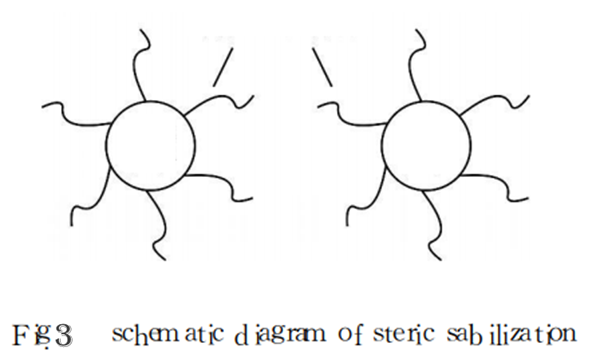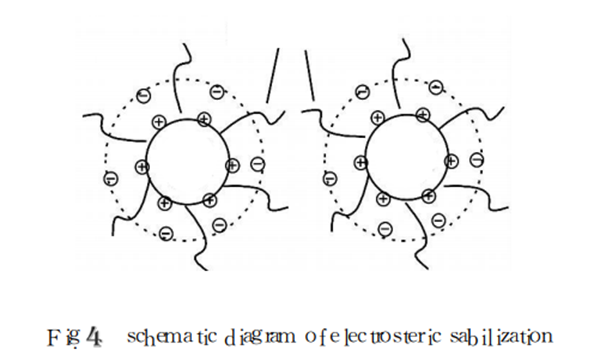- Home
- Products
- Elementary
- Boride Powder
- 3D Printing Powder
- Sulfide Powder
- Oxide Powder
- Carbide powder
- Nitride Powder
- Silicide Powder
- Hydride Powder
- Telluride Powder
- Selenide Powder
- Stearic Acid Series
- Phosphide Powder
- Nanoparticles
- Metal Alloy
- MAX Phase
- Lithium Battery Anode
- Surfactant
- Molecular sieves
- Concrete Admixtures
- News
- Answers
- Contact
- About
How to improve nanoparticles to make them more superior nanomaterials
Cluster of nanoparticles
The agglomeration of nanoparticles can be divided right into 2 types: soft pile as well as tough load. Soft load is mainly created by the electrostatic pressure between fragments and van der Waals pressure. As a result of the weak pressure, soft load can pass some chemical methods.
The regulation or the application of power to remove; the formation of hard load along with electrostatic pressures as well as van der Waals forces, there are chemical bonds, so tough agglomerates are difficult to destroy, require to take some unique approaches to regulate.
 < img src="// ueeshop.ly200-cdn. com/u _ file/UPAI/UPAI779
/ 1907/photo/1661a376e4. png"/ > Schematic layout of agglomeration of nanoparticles Dispersion of nanoparticles One of the techniques to stop the formation of high-density, hard-block precipitates of nanoparticles is to minimize van der Waals destination or communication between teams, to make sure that the main particles are not quickly agglomerated to develop second particles, consequently preventing more inter-atomic bonding. This leads to the development of high-density, hard-blocked precipitates. The anti-agglomeration mechanism of nanoparticles is divided right into: (1) electrostatic stablizing (DLVO concept); (2) steric stablizing; (3) electrostatic steric stablizing.
Nanoparticle diffusion concept Electrostatic stablizing system (DLVO concept)
The electrostatic stablizing system, additionally called the electric double layer stabilization system, creates an electrical dual layer by readjusting the pH value to create a specific quantity of surface area fee on the surface of the bit. The destination in between the particles is significantly reduced by the repulsive force in between the electric double layers, therefore realizing the dispersion of the nanoparticles. The mechanism is revealed as displayed in Number 2.
< img src="// ueeshop.ly200-cdn. com/u _ file/UPAI/UPAI779
/ 1907/photo/1661a376e4. png"/ > Schematic layout of agglomeration of nanoparticles Dispersion of nanoparticles One of the techniques to stop the formation of high-density, hard-block precipitates of nanoparticles is to minimize van der Waals destination or communication between teams, to make sure that the main particles are not quickly agglomerated to develop second particles, consequently preventing more inter-atomic bonding. This leads to the development of high-density, hard-blocked precipitates. The anti-agglomeration mechanism of nanoparticles is divided right into: (1) electrostatic stablizing (DLVO concept); (2) steric stablizing; (3) electrostatic steric stablizing.
Nanoparticle diffusion concept Electrostatic stablizing system (DLVO concept)
The electrostatic stablizing system, additionally called the electric double layer stabilization system, creates an electrical dual layer by readjusting the pH value to create a specific quantity of surface area fee on the surface of the bit. The destination in between the particles is significantly reduced by the repulsive force in between the electric double layers, therefore realizing the dispersion of the nanoparticles. The mechanism is revealed as displayed in Number 2.

- < img src="// ueeshop.ly200-cdn. com/u _ file/UPAI/UPAI779/ 1907/photo/38c1a5ba33. png"/ > Stochastic stablizing mechanism The steric stabilization system is to include a particular amount of uncharged polymer substance to the suspension to adsorb it around the nanoparticles to develop a microcell state, which triggers repulsion between the fragments, thus accomplishing the function of dispersion. The mechanism representation is received Figure 4.
- Electrostatic steric stabilization system
The pH worth of the polyelectrolyte makes best use of the dissociation degree of the polyelectrolyte, so that the polyelectrolyte on the surface of the bit gets to the saturated adsorption, and also both together function to consistently spread the nanoparticles. The mechanism representation is displayed in Figure 3.
 < img src="// ueeshop.ly200-cdn.
com/u _ file/UPAI/UPAI779/ 1907/photo/ed7d9c96f4. png"/ > Nanoparticle dispersion approach The dispersion of nanoparticles in the medium is generally separated into three phases: 1 liquid moistening the strong bits; 2 dispersing the larger accumulations into smaller fragments by exterior force; 3 stabilizing the spread fragments, making sure that the powder bits are in the liquid The phase continues to be consistently dispersed for a lengthy period of time to avoid the spread particles from re-aggregating. According to different diffusion mechanisms, it can be separated into mechanical activity technique as well as surface modification technique.
< img src="// ueeshop.ly200-cdn.
com/u _ file/UPAI/UPAI779/ 1907/photo/ed7d9c96f4. png"/ > Nanoparticle dispersion approach The dispersion of nanoparticles in the medium is generally separated into three phases: 1 liquid moistening the strong bits; 2 dispersing the larger accumulations into smaller fragments by exterior force; 3 stabilizing the spread fragments, making sure that the powder bits are in the liquid The phase continues to be consistently dispersed for a lengthy period of time to avoid the spread particles from re-aggregating. According to different diffusion mechanisms, it can be separated into mechanical activity technique as well as surface modification technique.
- Mechanical activity
- Surface alteration
- Surface alteration of nanoparticles by not natural compounds
- Surface alteration of nanoparticles by raw material
 < img src ="// ueeshop.ly200-cdn.
com/u _ file/UPAI/UPAI779/ 1907/photo/c845513ec8. png"/ > conclusion The surface adjustment innovation of nanoparticles is a side technique very closely relevant to many other self-controls, including colloidal chemistry, organic chemistry, crystallography, nanomaterials, modern instrument evaluation as well as testing. The surface area coating adjustment modern technology has been commonly used in the surface area adjustment of nanometers, and also the research study results in this location also reveal that the surface area finish modern technology has a good advancement prospect. Nevertheless, the adjustment mechanism, adjustment technique and equipment, as well as the modification impact characterization are still not best. Lot of times, the trouble can not be resolved essentially, as well as additional research study is urgently needed. Due to the considerable changes in the physical and chemical buildings of the surface-treated bits, the growth of nano surface area alteration technology is taken into consideration a vital ways of producing brand-new products in the future. With the constant research and understanding of nano-particles, as well as further expedition of the surface area adjustment of nano-powders, nano-technology will definitely apply prospective power in different fields and will create a great culture. Benefits and financial advantages.
< img src ="// ueeshop.ly200-cdn.
com/u _ file/UPAI/UPAI779/ 1907/photo/c845513ec8. png"/ > conclusion The surface adjustment innovation of nanoparticles is a side technique very closely relevant to many other self-controls, including colloidal chemistry, organic chemistry, crystallography, nanomaterials, modern instrument evaluation as well as testing. The surface area coating adjustment modern technology has been commonly used in the surface area adjustment of nanometers, and also the research study results in this location also reveal that the surface area finish modern technology has a good advancement prospect. Nevertheless, the adjustment mechanism, adjustment technique and equipment, as well as the modification impact characterization are still not best. Lot of times, the trouble can not be resolved essentially, as well as additional research study is urgently needed. Due to the considerable changes in the physical and chemical buildings of the surface-treated bits, the growth of nano surface area alteration technology is taken into consideration a vital ways of producing brand-new products in the future. With the constant research and understanding of nano-particles, as well as further expedition of the surface area adjustment of nano-powders, nano-technology will definitely apply prospective power in different fields and will create a great culture. Benefits and financial advantages.
Luoyang Tech Co., Ltd is a professional Zinc Nanoparticles manufacturer with over 12 years experience in chemical items research as well as growth. If you are seeking premium quality Zinc Nanoparticles, please really feel totally free to contact us and also send out an inquiry.
Inquiry us
NEXT NEWS
 < img src="// ueeshop.ly200-cdn.
com/u _ file/UPAI/UPAI779/ 1907/photo/ed7d9c96f4. png"/ > Nanoparticle dispersion approach The dispersion of nanoparticles in the medium is generally separated into three phases: 1 liquid moistening the strong bits; 2 dispersing the larger accumulations into smaller fragments by exterior force; 3 stabilizing the spread fragments, making sure that the powder bits are in the liquid The phase continues to be consistently dispersed for a lengthy period of time to avoid the spread particles from re-aggregating. According to different diffusion mechanisms, it can be separated into mechanical activity technique as well as surface modification technique.
< img src="// ueeshop.ly200-cdn.
com/u _ file/UPAI/UPAI779/ 1907/photo/ed7d9c96f4. png"/ > Nanoparticle dispersion approach The dispersion of nanoparticles in the medium is generally separated into three phases: 1 liquid moistening the strong bits; 2 dispersing the larger accumulations into smaller fragments by exterior force; 3 stabilizing the spread fragments, making sure that the powder bits are in the liquid The phase continues to be consistently dispersed for a lengthy period of time to avoid the spread particles from re-aggregating. According to different diffusion mechanisms, it can be separated into mechanical activity technique as well as surface modification technique.
 < img src ="// ueeshop.ly200-cdn.
com/u _ file/UPAI/UPAI779/ 1907/photo/c845513ec8. png"/ > conclusion The surface adjustment innovation of nanoparticles is a side technique very closely relevant to many other self-controls, including colloidal chemistry, organic chemistry, crystallography, nanomaterials, modern instrument evaluation as well as testing. The surface area coating adjustment modern technology has been commonly used in the surface area adjustment of nanometers, and also the research study results in this location also reveal that the surface area finish modern technology has a good advancement prospect. Nevertheless, the adjustment mechanism, adjustment technique and equipment, as well as the modification impact characterization are still not best. Lot of times, the trouble can not be resolved essentially, as well as additional research study is urgently needed. Due to the considerable changes in the physical and chemical buildings of the surface-treated bits, the growth of nano surface area alteration technology is taken into consideration a vital ways of producing brand-new products in the future. With the constant research and understanding of nano-particles, as well as further expedition of the surface area adjustment of nano-powders, nano-technology will definitely apply prospective power in different fields and will create a great culture. Benefits and financial advantages.
< img src ="// ueeshop.ly200-cdn.
com/u _ file/UPAI/UPAI779/ 1907/photo/c845513ec8. png"/ > conclusion The surface adjustment innovation of nanoparticles is a side technique very closely relevant to many other self-controls, including colloidal chemistry, organic chemistry, crystallography, nanomaterials, modern instrument evaluation as well as testing. The surface area coating adjustment modern technology has been commonly used in the surface area adjustment of nanometers, and also the research study results in this location also reveal that the surface area finish modern technology has a good advancement prospect. Nevertheless, the adjustment mechanism, adjustment technique and equipment, as well as the modification impact characterization are still not best. Lot of times, the trouble can not be resolved essentially, as well as additional research study is urgently needed. Due to the considerable changes in the physical and chemical buildings of the surface-treated bits, the growth of nano surface area alteration technology is taken into consideration a vital ways of producing brand-new products in the future. With the constant research and understanding of nano-particles, as well as further expedition of the surface area adjustment of nano-powders, nano-technology will definitely apply prospective power in different fields and will create a great culture. Benefits and financial advantages.